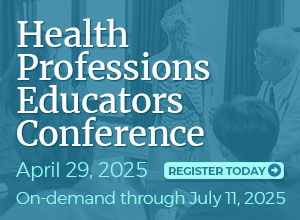An international conversation around an increased focus on high-quality teaching at R1 institutions has been gaining momentum for several years. A recent shift in the conversation, focused on identifying fair and valid measures to evaluate effective teaching, continues to grow. On the one hand, individual departments and colleges look to their institutions’ teaching and learning centers for guidance in matters of pedagogy. On the other, university policies for compensation and promotion often complicate the construction of a university-wide process for developing, evaluating, and compensating high-quality teaching. Colorado State University (CSU) faced this challenge head-on through two initiatives: the faculty-led Evaluating Teaching Effectiveness Task Force in 2015 and the effort of our team from The Institute for Learning and Teaching (TILT) in 2018. The task force was instrumental in changing the CSU Faculty Manual code, requiring departments to define effective teaching and assess it using as evidence multiple measures instead of a single average score from student evaluations. To support departments, TILT constructed a definition of effective teaching, which led to the creation of a collection of tools (the Teaching Effectiveness Framework) and a recommended process for developing and evaluating teaching at CSU.
The teaching effectiveness framework
Seven essential, interrelated domains of effective teaching practices, each grounded in the scholarship of teaching and learning, create the foundation for the Teaching Effectiveness Framework (Figure 1). The framework includes leveled criteria within each domain, a goal-setting process, a collection of teaching practices to improve student learning, and materials to measure growth in teaching effectiveness. Recently added as an essential component in the annual review process at CSU, the framework allows instructors to reflect on their teaching practice and identify areas of strength and challenge, while providing administration a process to support and evaluate this growth.
Designed to support faculty as they grow their teaching practice, the framework provides much-needed guidance during the Process for Developing and Evaluating Teaching Effectiveness at a Glance seen in Figure 1. The process recommends that faculty set a personal teaching goal for the academic year, align the goal with a domain on the framework, plan professional learning, triangulate evidence by identifying three measurement tools to demonstrate goal achievement, integrate practices into their teaching, and reflect on progress and student success. We recommend basing evaluation on goal achievement and teaching growth rather than student opinions of the instructor or one-time peer observations and evaluations.

Figure 1. Colorado State University Teaching Effectiveness Framework
For years, TILT has provided a substantial number of professional development opportunities on teaching and learning. Without redesigning all our seminars and workshops, we aligned each learning experience with a primary and secondary domain on the framework. Throughout the year, interested faculty seek out and attend sessions that align with the domain of their annual goal. In spring 2018, TILT launched Teaching Squares, a nonevaluative, growth-based peer observation program grounded in the framework. In Teaching Squares, a group of four faculty agree to observe each other throughout the semester. Participants choose a domain focus, set a personal teaching goal, and then observe others to give feedback and reflect on their own practice. Additionally, the TILT website provides best practices and supporting research for each domain so that faculty can pursue development on their own. The alignment of the seven domains with professional development opportunities and our website content streamlines the growth process for busy faculty.
Gaining buy-in: Cultural change to elevate the conversation around teaching
We shared our initial thinking and early drafts of the framework with several stakeholders—the vice provost for faculty affairs, the committee on teaching and learning, the committee for non–tenure-track faculty, department heads and executive committees, and many faculty—and asked for input and recommendations so that departments might adopt this new definition of teaching effectiveness and process for improvement. Gaining support from such groups has been instrumental in our success thus far. Our eventual rollout of the Teaching Effectiveness Framework to a larger audience provided our team with input and encouragement from faculty to continue to develop the framework and goal-setting process. Since its inception, the framework has been well received by faculty and administrative focus groups who appreciate the focus on research-based teaching and a process for growth.
Once we shared the framework with several hundred faculty and campus administrators, we realized its potential to elevate the conversation around teaching at CSU, which not only validated but also placed high value on our work. This new process provides faculty and administrators with a common language to talk about teaching as well as a common experience in which to reflect, assess, learn, and integrate new knowledge and skills into their teaching.

In our previous experience supporting faculty, when instructors planned a class or worked to improve their teaching, they often limited their focus to only adding instructional strategies to their classrooms. The framework assigns equal importance across all seven domains. As we introduced these domains to faculty, many admitted they had never considered classroom climate, student motivation, or inclusive pedagogy as a focus to improve their teaching effectiveness. They might have wanted or hoped for a classroom that felt collaborative and supportive but did not have the knowledge or resources to make that happen. The framework intentionally calls out each of the seven domains as being independently important while acknowledging significant interdependence among them. Ultimately, if faculty focus on one domain, they are more likely to see improvements in other domains as well.
Looking ahead
Recently, the vice-provost for faculty affairs tasked departments to create promotion criteria for teaching faculty and to uphold university code by using multiple measures to assess teaching effectiveness using the framework as the tool to carry out this task. As departmental administration and faculty explore options to develop and evaluate teaching effectiveness, many have reached out to TILT to learn more about the Teaching Effectiveness Framework. These collaborative conversations have led to the refinement of the Framework as well as the development of additional tools to support faculty and administration in the goal setting, personal development, and evaluation process. During these processes, TILT continues to collect data related to faculty teaching practices, goal setting, and the framework—and will use this information to hone the framework and support faculty in their growth as effective teachers.
For further reading
Ambrose, S., Lovett, M., Bridges, M., DiPietro, M., & Norman, M. (2010). How learning works: Seven research-based principles for smart teaching (1st ed.). San Francisco, CA: Jossey-Bass.
Association of American Colleges and Universities. (n.d.) Making excellence inclusive. Retrieved from www.aacu.org/making-excellence-inclusive
Bain, K. (2004). What the best college teachers do. Cambridge, MA: Harvard University Press.
Berk, R. A. (2005). Survey of 12 strategies to measure teaching effectiveness. International Journal of Teaching and Learning in Higher Education, 17(1), 48–62.
Cornell Centre for Teaching and Learning. (1997). Teaching evaluation handbook (3rd ed.). Ithaca, NY: Office of Instructional Support, Cornell University.
Devlin, M., & Samarawickrema, G. (2010). The criteria of effective teaching in a changing higher education context. Higher Education Research and Development, 29(2), 111–124.
Felder, R. M., Rugarcia, A., & Stice, J. E. (2000). The future of engineering education: Part 5. Assessing teaching effectiveness and educational scholarship. Chemical Engineering Education, 34(3), 198–207.
Giovannelli, M. (2010). Relationship between reflective disposition toward teaching and effective teaching. The Journal of Educational Research, 96(5), 293–309.
Hattie, J. (2015). The applicability of visible learning to higher education. Scholarship of Teaching and Learning in Psychology, 1(1), 79–91. https://doi.org/10.1037/stl0000021
Hulleman, C. S., Barron, K. E., Kosovich, J. J., & Lazowski, R. A. (2016). Student motivation: Current theories, constructs, and interventions within an expectancy-value framework. In A. A. Lipnevich, F. Preckel, & R. D. Roberts (Eds.), Psychosocial skills and school systems in the 21st century (pp. 241–278). Cham, Switzerland: Springer.
Kwantan University Office of Institutional Analysis and Planning. (2007). Establishing a framework for evaluating teaching excellence: An overview of the literature.
Lang, J. M. (2016). Small teaching: Everyday lessons from the science of learning. San Francisco, CA: Jossey-Bass.
Lee, A., Poch, R., O’Brien, M. K., & Solheim, C. (2017). Teaching interculturally: A framework for integrating disciplinary knowledge and intercultural development. Sterling, VA: Stylus.
Oleson, A., & Hora, M. T. (2014). Teaching the way they were taught? Revisiting the sources of teaching knowledge and the role of prior experience in shaping faculty teaching practices. Higher Education, 68(1), 29–45. https://doi.org/10.1007/s10734-013-9678-9
Pintrich, P. R. (2003). A motivational science perspective on the role of student motivation in learning and teaching contexts. Journal of Educational Psychology, 95(4), 667–686. https://doi.org/10.1037/0022-0663.95.4.667
Quaye, S. J., & Harper, S. R. (Eds). (2015). Student engagement in higher education: Theoretical perspectives and practical approaches for diverse populations (2nd ed). New York, NY: Routledge.
Strayhorn, T. L. (2019). College students’ sense of belonging: A key to educational success for all students (2nd ed). New York, NY: Routledge.
Wieman, C. (2015). A better way to evaluate undergraduate teaching. Change: The Magazine of Higher Learning, 47(1), 6–15.
This article first appeared in Academic Leader on March 2, 2020 © Magna Publications. All rights reserved.
Special Offer: Get your first month of Academic Leader’s monthly subscription for just $1. Use coupon code AL41 at the cart during checkout! Visit here to subscribe!



